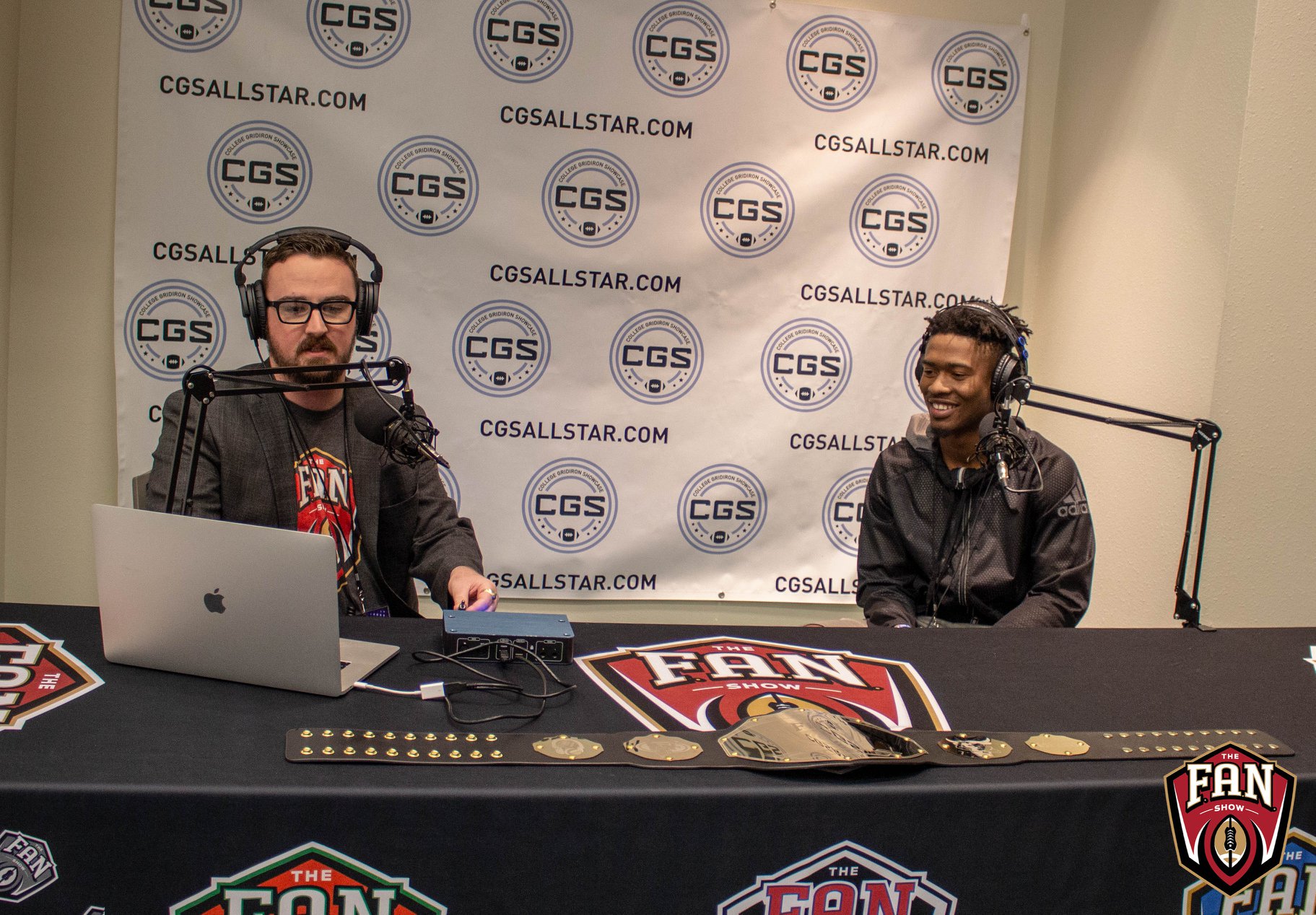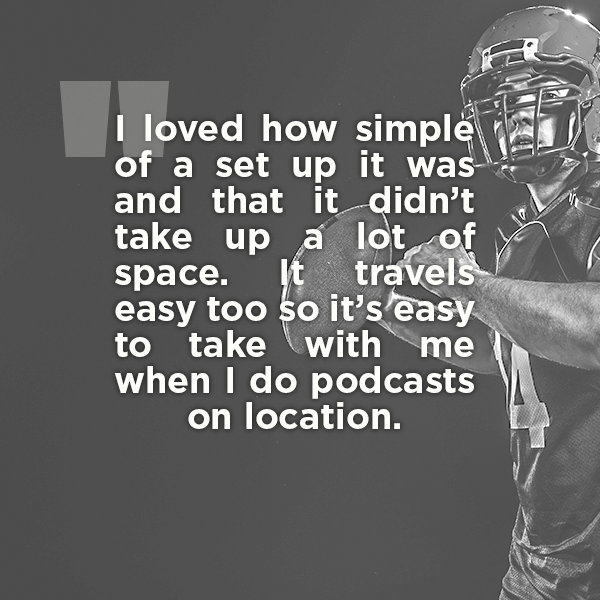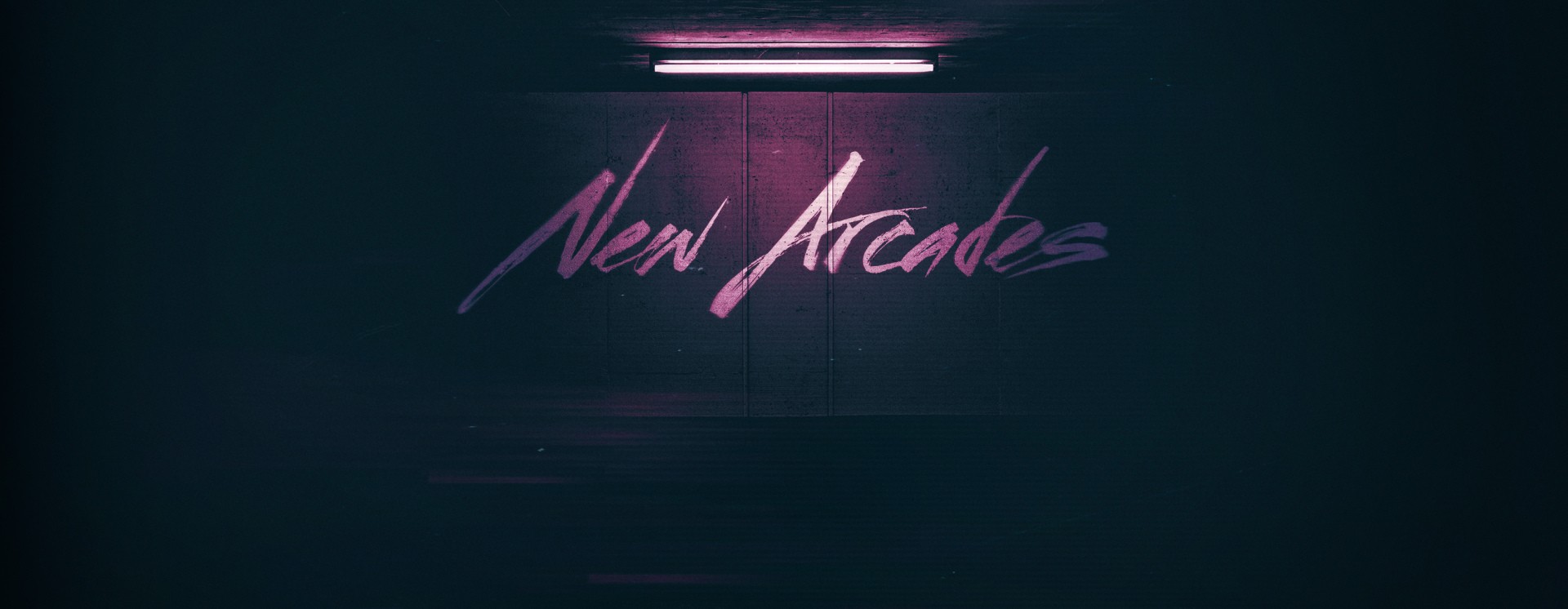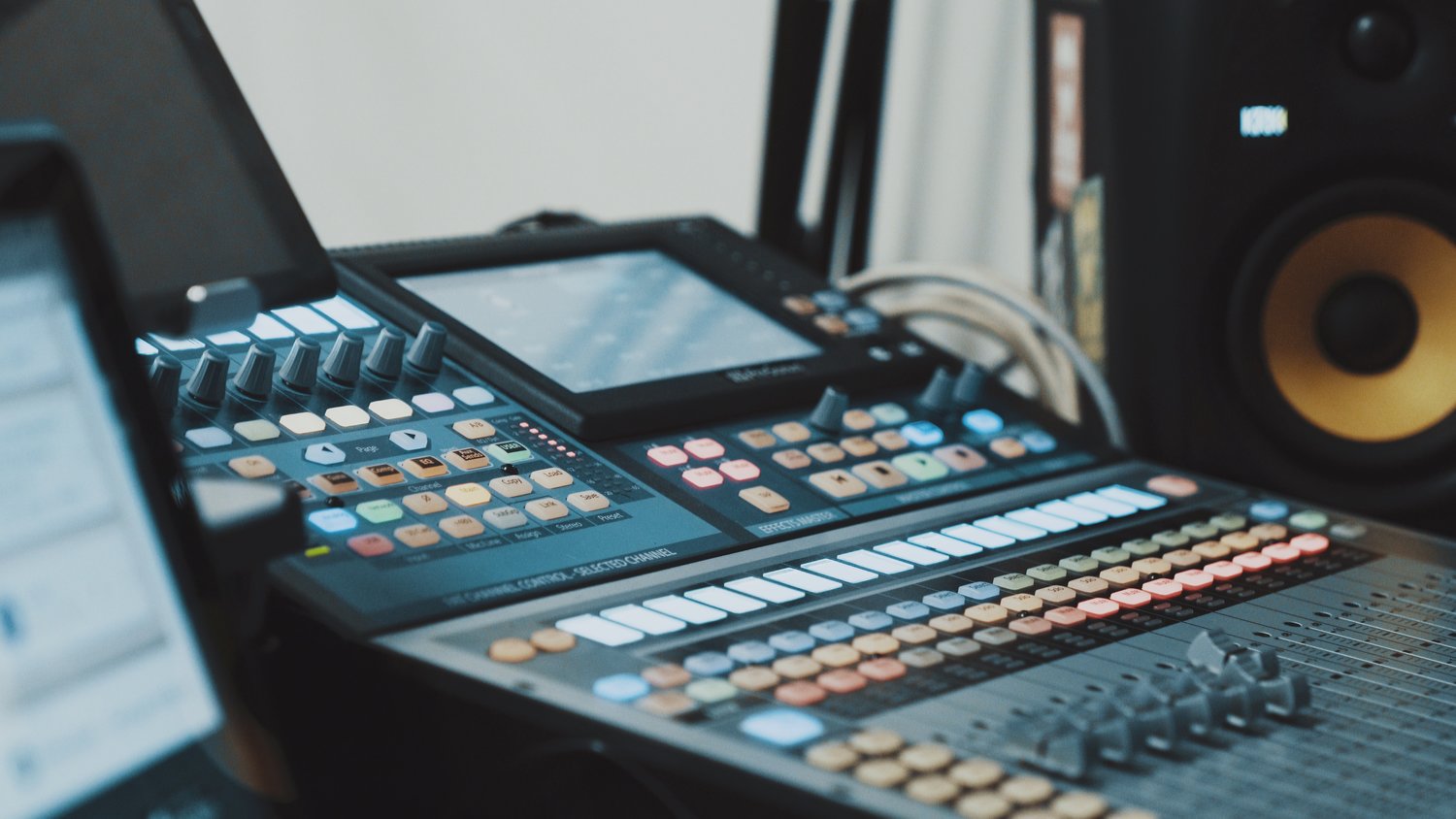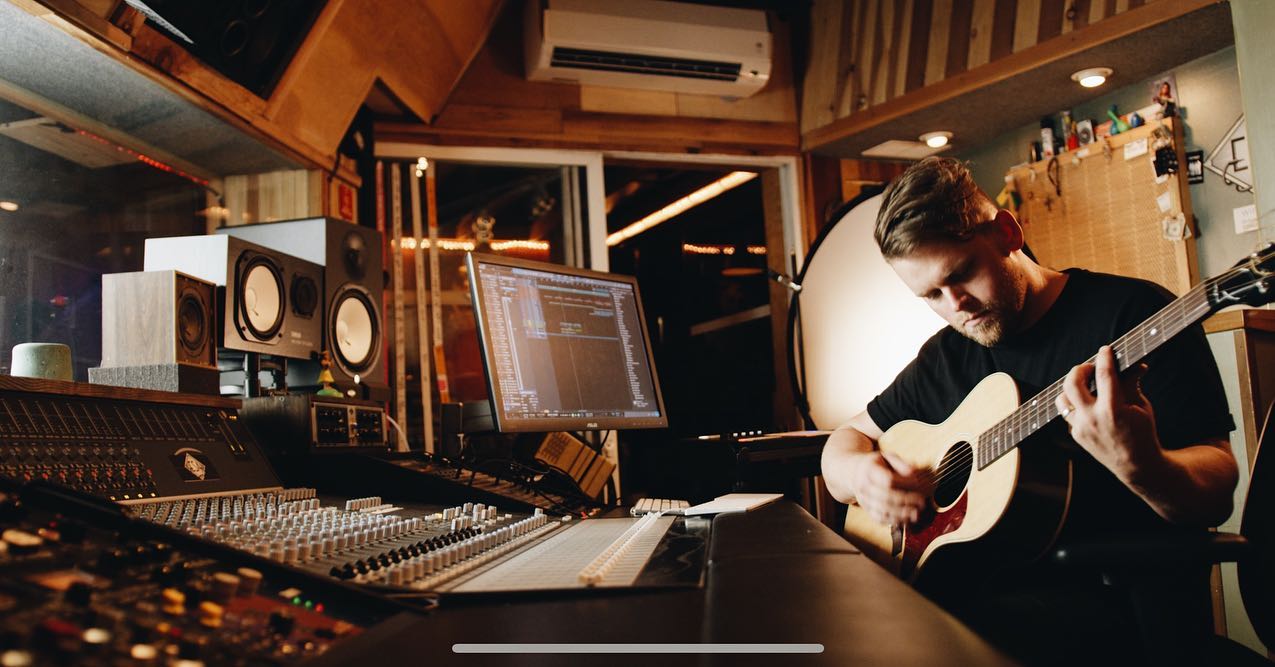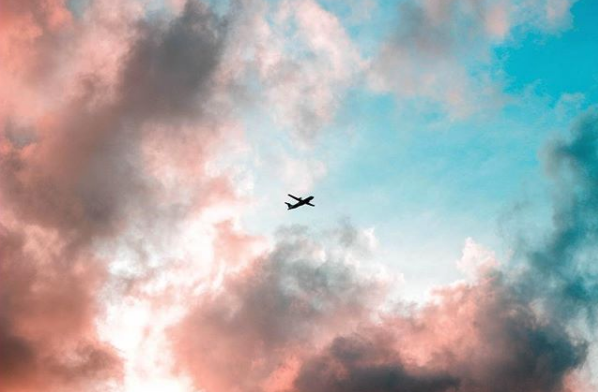Category Archives: Artist
Football, Podcasts and Studio One
Over here stateside, ‘Tis the season for family, over-eating, traveling, watching football, and more eating. You may not be a huge fan of the holidays, but I love them! The holidays have something for everyone, much like a recent podcast I came across on Twitter called The F.A.N. Show.
The F.A.N. Show is a one-man, award-winning sports variety show based in Spokane, WA—and it’s in a league of its own. There’s something for every fan. The show is hosted by Richard Tieman, who is a musician, producer, sports fanatic, and Studio One user. After five years of recording 440 podcast episodes on the same AudioBox iTwo he purchased in 2015, Richard shows no signs of slowing down. We wanted to know more about how his podcast came to be so successful.
Tell us about your background. How long have you been in the audio industry?
I was a drummer for a punk rock band since I was 17, and loved music, performing live, and traveling to different cities. I also love a variety of things like football, the outdoors, pop culture, and even pro wrestling. I had a knack for entertaining people, and I’ve always been comfortable on a microphone. I met my wife seven years ago and we’ve been married for five, and she is my single greatest supporter and biggest fan. I’ve been in audio for about 15 years. 10 years ago I got really passionate about it when I started hosting karaoke at a local bar while I was still touring with my band. Then when we broke up five years later, a friend suggested that I should start my own podcast, so I figured… why not?
How has the audio industry changed since your early days? 
It’s changed quite a bit. When I was in the band, podcasts weren’t very popular yet. Not many people even knew what they were. Recording and editing equipment and software were super expensive, so you had to really have a passion for audio/video in order to justify going all-in on the idea. I remember making a business proposal for starting my own karaoke and entertainment company in 2015, and the money I needed for karaoke equipment and songs, just to get started, was about $3,000. Now, everyone and their mom has a podcast or YouTube channel and the cost to buy a “starter kit” for those is around $300. Quite the difference.
What’s your favorite podcast right now?
As a wrestling fan, he’s one of my favorites. He’s also the frontman for the band Fozzy, and he doesn’t just interview wrestlers. He has a wide variety of different guests and that’s what I love about his show. The mix. I guess his podcast is what inspired me to branch out to talk about more than just football. Yes, I love football, but I love other things as well. Music, comics, the outdoors. Why limit myself?
Tell us about your podcast.
At first, it was just me and my thoughts about football and my 49ers. It’s the sport I know well, and the one I felt the most comfortable talking about. I also hated all the irrelevant news you started to see and hear on mainstream sports media. It was less about stats and highlights and more rumors and gossip. I wouldn’t say I started my podcast out of spite, but the idea of being different was certainly appealing. What was a weekly podcast called The ButtFumble Show is now a live-streamed variety show that airs three times a week and covers a little bit of everything: The F.A.N. Show. “Everyone’s a FAN of something, and we have something for every fan.”
Where did the idea for your podcast come from?
The rooftop of a bar in downtown Spokane where my 10-year high school reunion was happening. My buddy Cameron and I were talking about his Seahawks and my 49ers. and going back and forth about their last season and stuff that needed to happen in the offseason. He was really impressed with not only my knowledge of my team and the league, but that I could carry a conversation and could back up my opinions with facts. So he asked if I had ever thought of becoming a sports analyst, and I laughed and said, no thanks. That’s when he suggested starting my own podcast.
How does your first podcast compare to your most recent?
Oh boy. My first episode was terrible. 20 minutes of me sitting in a chair in the spare room of our house, just rambling on about the upcoming season and what to watch for. I’d never used any PreSonus equipment before, or any podcasting equipment for that matter, so my mic was turned down really low and I didn’t know how to edit the recording. Like I said, terrible. Now, almost 440 episodes later, I have my own intro theme, I have segments, sound effects, I know how to edit and get the best sound quality I want. My best episode is always my next episode.
There are so many podcasts these days. How do you stand out?
In all honesty, I can’t say that I do “stand out.” I know that I’ve learned a lot in five years of doing my podcast, and even though all the changes and trying new things, I’ve always stuck to what I believe and not trying to conform to certain styles just to get clicks or downloads. My fans are my fans, and as long as they tune in and listen, I’ll keep doing it. But I do know what makes my show “different,” is that even after five years, I’m still doing it. Not everyone who has thought “Hey, I can do that,” has actually done it for very long. Some guys I know that started podcasts never made it past 10 episodes. I’m about to do my 440th. I pride myself on constantly wanting to learn and get better. Try new things. And I’m persistent.
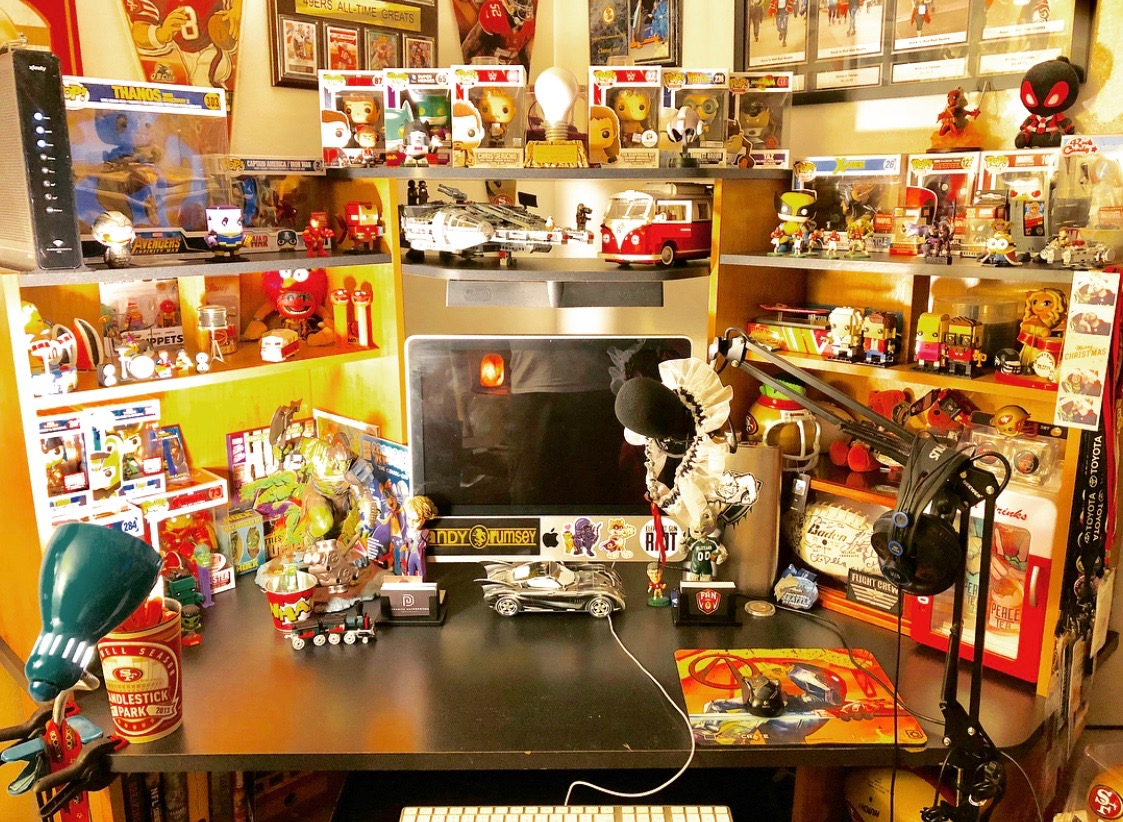 What advice do you have for someone who wants to start a podcast?
What advice do you have for someone who wants to start a podcast?
Be ready for criticism and be open to feedback. Feedback is one of the hardest things because it’s not all good feedback, but you need people supporting you that will be honest with you and tell you what they liked and more importantly, what they didn’t like. That, and to be consistently persistent. Like I said, I know people that never made it more than 10 episodes. There will be a lot of excuses you can make for yourself, but if it’s really something you’re passionate about, you’ll make it a priority. I’ll tell anyone and everyone what programs or equipment I use, and people think I’m crazy for giving away my “secrets to success.” That’s not the secret. I don’t even have a secret. I just made my show a priority and have built a brand as a result.
How did you first hear of PreSonus?
Google. Haha. I talked with my wife about the podcast idea and since the band had broken up and I was going back to school for my AA degree in Business Management, she said I needed a hobby and thought the podcast would be good for me. So we searched “Podcasting kits” and the 2nd or 3rd result was the “PreSonus AudioBox iTwo.” About $220, it came with the AudioBox, mic, mic cord, headphones, and Studio One for editing. Connect it to the USB port on your computer and you’re ready to roll. I loved how simple the set up was, and that it didn’t take up a lot of space. It travels easily too, so it’s easy to take with me when I do podcasts on location.
What PreSonus products do you use?
I still use that same AudioBox iTwo (five years later) and I absolutely love it. I actually want to get another one so I can have one for my studio and one specifically for traveling. Or have one as a backup at the very least. You can never be too prepared when it comes to technology. I’ve since upgraded my mics, but still use Studio One and that same box for my show.
Why was PreSonus a good option for you? Was it easy to learn?
It was convenient, easy to use, and not a lot of extras. The less you have to worry about when it comes to recording, editing, and producing, the better. Not everyone has a producer or even an assistant, so if you’re a “one-man show” like I am, PreSonus is amazing. There was definitely a learning curve. A lot of it was self-explanatory, but I have a lot of audio friends that were happy to help me. YouTube is also an amazing learning tool, haha.
Do you ever take your podcast on the road? 
All the time. I’ll take it to local events like Comic-Con and interview special guests and cosplayers, or I’ll go to the comedy club and interview the comedians in the green room before their show. I’ve even interviewed bands at our local concert house before their shows. But my favorite time of the year is my annual tour. I take the AudioBox and my set up and go to different events across the country like BattleBots, or arena football games and I’ll host tailgate parties and use it for a live stream, or I’ll interview players and coaches after the game. I’ve gotten pretty good at setting up in hotel rooms and at arenas.
Recent projects? What’s next for you?
I just finished my third tour, which was awesome, and I was also hired to do media for different events where I would go and interview players, coaches, staff, cast and crew and publish them as podcasts to help promote the events. The show has a great following and I’ve gotten more and more opportunities like these as a result. I recently accepted the position of Director of Communications for the Sioux Falls Storm. An indoor football team that had heard of me and my podcast and wanted me to be apart of their winning team for 2020. I will be doing that as well as continuing what I do with my podcast. I’m hoping 2020 is my biggest year yet and that moving to a new city will hopefully create new opportunities. The new owners of the Storm were very adamant about me continuing to do my podcast and continuing to grow my brand, so that is what I will look to do next year!
Where can we listen to your podcast?
The F.A.N. Show is available on most major podcasting platforms including:
- iTunes: https://podcasts.apple.com/us/podcast/the-f-a-n-show/id1086005267
- Spotify: https://open.spotify.com/show/5uapKFdFfmrrUIzC8UaFTa
- SoundCloud: https://soundcloud.com/thefanshow
- iHeartRadio: https://www.iheart.com/podcast/53-the-fan-shows-track-28512625/
- Spreaker: https://www.spreaker.com/user/thefanshow
Follow The FAN Show on Instagram!
Follow the FAN Show on Facebook!
Interested in joining the Studio One Family? Click here for the best price all year!
New Arcades and Studio One!
Instagram isn’t just for cute, filtered images of yourself and your dog or gear! It’s a great community uniting musicians and artists brave enough to put their best work out there. One of those Instagram accounts is run by our friend and Studio One user, Adam Sullivan—one of the front men for New Arcades, a UK duo inspired by nostalgic memories of 80s cinema and vintage synth sounds. Think of blue skies, urban nightlife, and hazy sunrises and you have the New Arcades!
Studio One is Adam’s go-to DAW since 2.0! He also has a FaderPort and StudioLive 24R.
Give us some background on yourself. How long have you been making music?
I’ve been a musician from a very young age, nowadays I’m a jack of all trades, master of none. I obtained a degree in music technology and sound engineering/composition at Lancaster University (UK). We started creating music and mixing tracks in 2008 and haven’t quit. It has become more and more serious in the last few years. This all in conjunction with being one of the main FOH Engineers at my church in London, Holy Trinity Brompton. Now I mix various artists’ tracks and create my own music for New Arcades. Additionally, my side project is known as “Shred Ministries” which has developed quite a decent following from the church/Christian scene as a comical reproduction of modern worship. Check it out on YouTube for a laugh.
How has the music industry changed since your early days?
Less and less are the labels willing to part with cash in order to promote, the risk is far greater for the artist it seems unless you are manufactured by the giant label themselves. Back in early days with medium independents, there might be a decent(ish) advance in exchange for the master copyright recordings. But it’s tragically at the point now, where for a promise of exposure, and (hopefully) enough money made is usually in exchange for the masters… I think now you have to do so much work, have many friends help push and support you and really drive home the music you create and believe in passionately. I stand by never giving up my masters indefinitely, and I would encourage all artists to be the same even if the promise of a bright future is tempting. Another area: digital music plugins have just stepped up… I now use a kemper when I play live, it’s just fantastic! It sounds incredible and it now would be for me favored over a guitar amp in a room! which I feel is insane! Nothing better than authentically playing the instrument though–somehow that’s always been the same.
Describe the first time you wrote a song? Produced it?
It was a co-write with my fellow band members. I’ve always produced and mixed the tracks but my first one was a pop/Indie/Rock track. I was dead proud! I look back on it now though, it was the early days, I’ve progressed, as has the DAW and the plugins! 😉
Who has been an influence in your life?
Chris and Tom Alge. Absolutely phenomenal mix engineers. Clarity and Punch. Love them.
Have you ever wanted to give up on music? What keeps you going?
A few times I have thought about stopping but I absolutely cannot help my need to create and ultimately, I persevere. I think also having a writing partner and bandmate always helps! Especially when you are both in tune, have similar styles and principles in your songwriting.
What do you like about PreSonus? What caught your eye?
The first thing that caught my eye was back in 2011: Studio One 2.0. It had this simple “Drag and drop” feature. I just loved how easy it was to slap something on the channel… The layout of the mix window and the integration of Melodyne. That, along with the power and depth of the EQ, Room Reverb, and Compressor that came with the package as standard had me hooked!
What PreSonus products do you use?
Studio One 4.5, FaderPort, various bundled software. StudioLive 24R rack mixer. I also use it in conjunction with the StudioLive 24 mix desk that I TOTALLY love!) It works great for all my function work, and is such a flexible setup.
When did you first hear about Studio One?
I was actually referred to it by a friend. They said they’d seen a review in Sound on Sound, which is very well respected. I went home, downloaded the free trial and haven’t looked back!
What features are you most impressed with your gear?
The interface of the Q-Mix and UC Surface app is great. The sound of the preamps in the Series III equipment. Capture 3.0 is fantastic also. Onboard SD card stem recording on the desk itself. I’ve yet to put the StudioLive 24 in with my DAW, but I’ve seen it can be a great surface, along with the remote control iPad app for vocal booth recording.
 Any user tips or tricks or interesting stories based on your experience with Studio One?
Any user tips or tricks or interesting stories based on your experience with Studio One?
Super easy actually! I had a decent understanding of several other DAWs. But Studio One was quite intuitive. I watched a few tutorials and just trial and error massively reap benefits. Studio One 4 is so powerful and versatile. Go exploring!
Where do you go for support?
YouTube, forums, etc. I have friends who are also well-established producers/mix engineers who I can pick the brains of on the regs. But I’m quite independent and I hate being defeated by things—so I usually resolve things myself!
Where do you go for inspiration?
I listen to other artists in the scene or genre I’m in, I watch movies that inspire creativity and put you in a hungry mindset… A bit like watching the movie “Creed” would make you want to train your socks off and chin someone in the ring. 😉 I do similar for my music. There are so many inspiring artists and creators out there, listening to fantastic scores and tracks just make me want to compete to be the best and make something as exciting and epic.
Recent projects? What’s next for you?
I just finished my album for my band New Arcades. I’ve been working on it since 2012! It’s being mastered as we speak, so hopefully won’t be long before it drops. Recently also did a track for well know acoustic/folk artist Roo Panes. He is a fantastic performer and the song we worked on together was called “Thinking Of Japan.” Everything has been recorded and mixed on Studio One. Next, will continue to do loads of live events and functions using all the gear, hopefully, make my own second album and work with more and more artists.
Follow them on Instagram!
Join the Studio One family at the best price all year—NOW!
Nigel Trego of DMT Productions: Commited to The StudioLive Series III Ecosystem
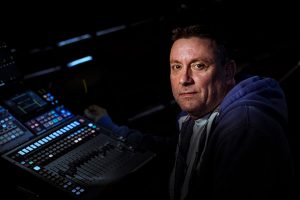
Nigel of DMT Productions
[This just in from Nigel of DMT Productions!]
Hi everyone, my name is Nigel Trego, I am the Technical Director at DMT Productions, a UK-based events production company. DMT specialises in producing live events for theatres, arenas and large festivals—from sound, lighting and projection to filming, photography and FX. DMT has been operating for ten years and has a team of 20-plus specialists including sound engineers, lighting engineers, dancers, performers, AV techs, drone, and Steadicam operators, photographers, and pyrotechnicians. DMT Productions have chosen the PreSonus Studiolive Series III Ecosystem as our touring mix package.
DMT currently has:
- two StudioLive 16s
- two StudioLive 32Rs
- two SW5E AVB switches
- two EarMix 16Ms.
DMT Production engineers have worked with the likes of Bob Dylan, Blood, Sweat and Tears, James, Texas, The Alarm, Westlife, Grace Jones, and Snow Patrol—to name a few.
We are at present engaged with several projects based in theatres, arenas and large festivals predominantly in the EU. As I write this, members of our team are working on a project filming with US-based Nitro Circus in Wales, helping to promote their World Games event across the UK.

Our current featured artist is Donna Marie, a multi-award-winning artist in her own right and the National Tribute and Music Award official #1 Lady Gaga Tribute and Impersonator for the last seven years. We are currently working for Donna to produce her UK tour of A Star is Born This Way, a tribute to the Oscar-winning film A Star is Born, in act one followed by a second act of full-on Gaga hits. The show features live and pre-recorded video, a live band, dancers, and pyrotechnics, and will be featured in a number of UK theatres—and even some arenas where Lady Gaga herself has performed!
DMT uses the PreSonus StudioLive Ecosystem exclusively. We use the PreSonus Studiolive 32R as a stage box and the StudioLive 16 at front of house. The logical layering and compact size of the StudioLive 16 make it perfect for all venue FOH sizes (some venues have limited FOH space, especially festivals) and it is easily transportable in the crew bus. We chose the PreSonus StudioLive Ecosystem for many reasons; previous experience with the StudioLive AI series and the legacy StudioLive products not only gave us the confidence in reliability and sound quality but also confidence in the ease-of-use. The layout is logical, and the Fat Channel allows for fast and clear access to parameters that are essential to a live performance. Naturally, we evaluated the competition with products such as Allen and Heath SQ-series and of course the Behringer X32 range. When compared via price vs. features/performance/
The feature sets of the Studiolive Series 3 Ecosystem are in abundance and too many to mention in this blog. However, we have some favorites! AVB is a clear winner. Great performance and flexibility allowing us to route any signal to whatever we want without having to buy expensive (licensed) AV networking expansion cards. We were using Focusrite Saffire Pro 40s as audio I/O for our sequenced stems—one of the only I/O devices that can handle 10 individual outputs (we run some of our stems in stereo). Now we can hook up a USB cable from our show control Mac straight to the StudioLive rack or console mixers and have as many USB audio channels for stems as we need; we can then route USB across the AVB network with practically zero latency. Most consoles have complicated menus for digital patching and for configuring matrices. We find the PreSonus very intuitive and easy-to-use at the console level—but even easier via UC Surface on a tablet.
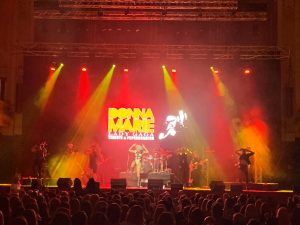 QMix-UC is also a fantastic feature. Our bands play with a click so that their performance is in sync with pre-recorded video and pre-recorded stems; thus monitor mix set-up is critical. Using an in-house desk can take up to an hour to get the perfect IEM mix for all band members, and even then that might need to change during the performance. The ability for the band to adjust their monitor mixes via the PreSonus QMix-UC app is now something that we cannot live without. Event setup time and sound check duration are dramatically reduced allowing us to focus on other areas of the production. Additionally, we save on the cost of a monitor desk and engineer. The project and scene management is second to none. Project, scenes and even the Fat Channel library can be exported/imported to/from a tablet or PC over USB or Wi-Fi.
QMix-UC is also a fantastic feature. Our bands play with a click so that their performance is in sync with pre-recorded video and pre-recorded stems; thus monitor mix set-up is critical. Using an in-house desk can take up to an hour to get the perfect IEM mix for all band members, and even then that might need to change during the performance. The ability for the band to adjust their monitor mixes via the PreSonus QMix-UC app is now something that we cannot live without. Event setup time and sound check duration are dramatically reduced allowing us to focus on other areas of the production. Additionally, we save on the cost of a monitor desk and engineer. The project and scene management is second to none. Project, scenes and even the Fat Channel library can be exported/imported to/from a tablet or PC over USB or Wi-Fi.
Our sound engineers love the PreSonus workflow and use the Fat Channel Collection Vol. 1 plug-in suite extensively. We are, however, excited about future PreSonus integration with Waves using the Waves AVB Soundgrid Bridge announced earlier this year.
The ability for us to record 34 channels of 48K multi-track at live events to SD Card (and Mac/PC) is also a fantastic feature. This allows us to take the recording back to the studio and load it straight into Studio One to mix for video production that we then use for further event promotion. We used this feature extensively during a multi-tribute festival this year where our camera operators filmed the entire three-day event. Our sound engineer took the FOH multi-track recordings back to the studio to mix. We were able to create professional video packages that we then provided to the bands that were performing, which they in turn now use as their promotional material for their socials and web.
The majority of the time, our engineers seldom use the console mixer, tablet at FOH is the way forward for them. Other great PreSonus features include the ability to share scenes between the different mixers, no matter the form factor, this is great to have a backup mix ready to go in case of an HW failure. Virtual sound check is a great tool and the ability to use two mixers in tandem is superb. Let me elaborate on that. We have the 32R set as “standalone” at drum riser position with all stage mics and instruments feeding it and the 32R is, in turn, feeding the IEMs, stage wedges and the main PA. Our show control MacBook is hooked up to the 32R via USB and digitally patched running 10 channels of USB audio. All of the 32R channels (including USB) are sent over AVB to the FOH console and the FOH console mixes (Matrix and Aux) sent back to the 32R over AVB. The flexibility of digital patching in conjunction with AVB is incredibly powerful. This allows us to benefit from the USB channels on the 32R at riser position while retaining full mix control at FOH.
One of our productions was to headline a festival this summer on a clifftop in beautiful West Wales, we had an audience of around 5000 at this particular event. We had decided to take our 32R (running on a Relio UPS) and feed the event PA (via their mixer) from the Left and Right channels of the 32R to allow us to soundcheck quickly. The event who supplied PA had a mixing desk they used for the other bands performing that evening of which we only used the two channels (Left/Right). Just before our performance began the heavens opened! Once the rain had stopped we managed to wipe the stage dry, tip the water out of the keyboard player’s keyboard and start the gig! After a spectacular video-based intro, three bars in on the first song, the power went out, no sound, no lights, no video.
The band continued to play, they were on IEMs from the 32R. Fortunately, the stage wedges were also working, they were on a different power feed to the main PA, so we turned them to face the crowd. It turns out that water had worked it’s way into the mains Distro taking out one of the electrical phases. It took the event organisers 13 minutes to fix the issue only to find their networked stage box had blown, so still no sound! We plugged the PreSonus 32R directly into the event’s amps and away we went! The show must go on. The reason for telling this story is because when we plugged the PreSonus directly into the amps, the difference in the sound quality was incredible, so much so that a number of people came over to FOH to comment on how good the sound was and to ask why it wasn’t as good for the other bands that were on during the event (not using our PreSonus). The event organisers were over the moon that the event continued during the power outage and commended DMT for keeping the audience entertained and stopping them from leaving the event.
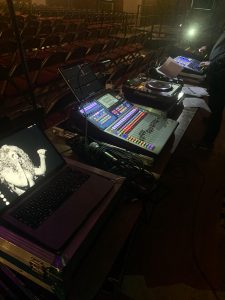
One of the most attractive things that PreSonus has to offer is that the end-user has a voice. Development of their hardware and software is continuous, user feature requests are taken seriously and the majority of them appear in the next software builds. The support infrastructure is excellent. We have called PreSonus UK on many occasions, the staff are very knowledgeable, friendly, and take a vested interest in helping to resolve even the most complex of problems, efficiently and with haste. On top of that, they are really nice guys that obviously love what they do. Interaction on social media by the PreSonus team is also a major plus point. To be able to reach out to people like Rick Naqvi, Jonny Doyle and Seth Martin on the StudioLive FaceBook Group is a great value-added commodity that is seldom seen with other companies.
For us at DMT Productions, PreSonus is a brand that we trust and we love using the products.
To find out more about DMT Productions, please feel free to visit our websites:-
A Riff on Heritage: Alien Weaponry Keeps Ancient Family Traditions Alive!
Let’s take a minute and acknowledge some of our favorite TV dads:
Now let’s introduce you to one of the coolest dads out there, Neil de Jong. He is the audio engineer and dad to two of the three-member tribal thrash-metal band Alien Weaponry. Like a good dad, he taught them the value of hard work. The band worked multiple jobs after school and on weekends, played tons of shows and funded all their own gear, full of instruments and recording equipment! Neil also served as the group’s manager until its recent signing to German music agency Das Maschine. He always went out of his way to teach his sons about Māori history and culture which is a massive influence on their music.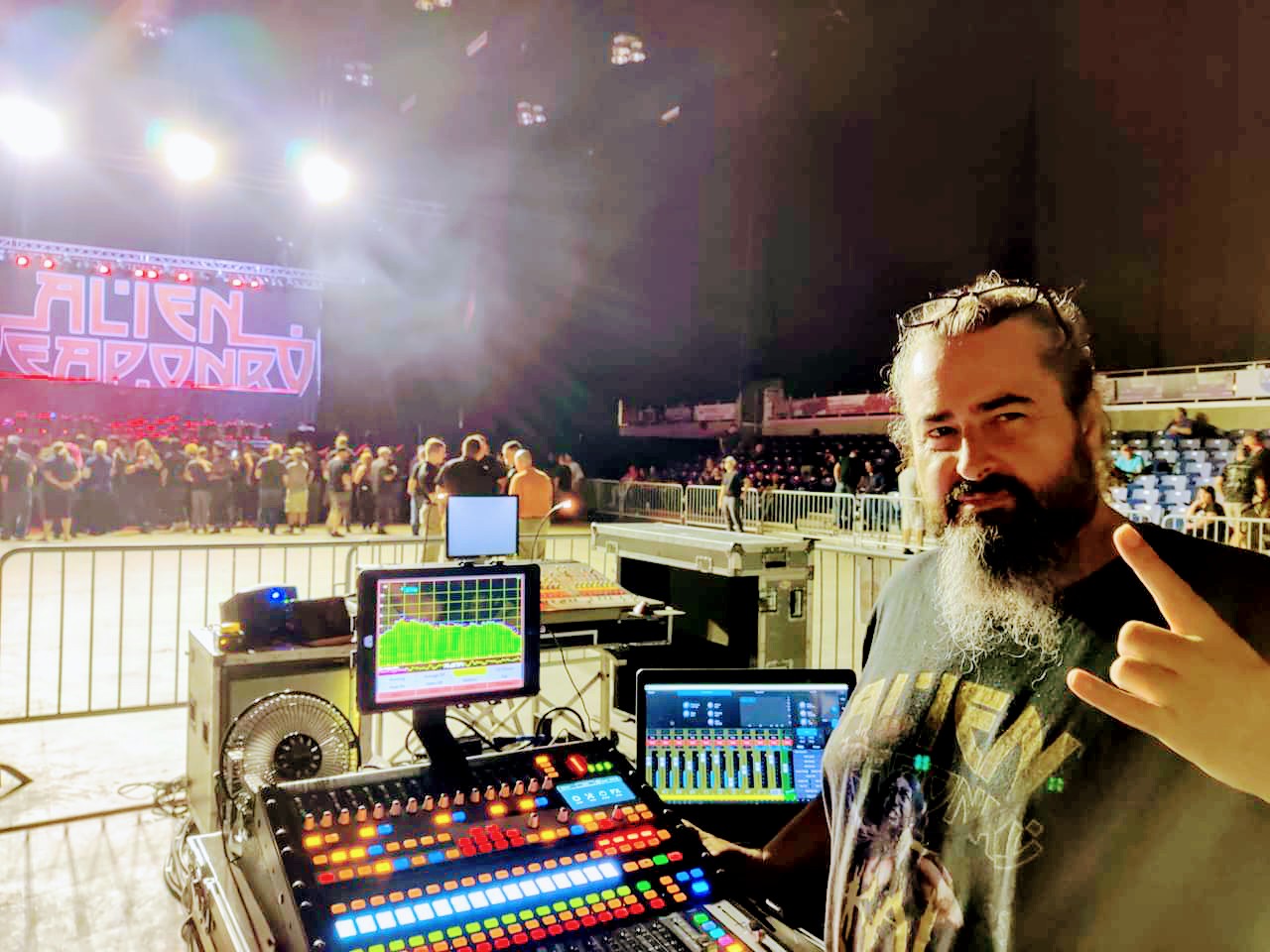
Alien Weaponry is a heavy metal band from Waipu, New Zealand, formed in 2010 by brothers Henry and Lewis de Jong. The band consists of Lewis de Jong (guitar and vocals), Henry de Jong (drums), and Ethan Trembath (bass guitar). Revolver Magazine called them “one of the best young metal bands in the world right now!”Alien Weaponry not only draws on the traditional Māori haka war-dance for their music, but often sing in the Māori language of Te Reo—and by doing so, are keeping the language alive. Pretty metal, right!?
They are currently killing it on tour, and we had the opportunity to hear all about it—and their rig, which includes a StudioLive RM32AI and a StudioLive CS18 AI. Neil took the time to answer a Q&A, below.
Hey Neil, give me some basic background info on your career and current projects.
I am 53 years old and have spent much of my life doing sound in one way or another. I spent my early years (like many) playing guitar in bands. When I was in my early 20s I landed a job working in a recording studio and trained there as a mastering engineer. I worked for many years on music and film projects as a post-production sound engineer and when Alien Weaponry started to make a name for themselves internationally I took on the role of live sound operator. I won Record Producer of the Year in last year’s New Zealand Music Awards for my work on Alien Weaponry’s album, Tū, which also won Best Rock Album and made dozens of Top Albums of 2018 lists worldwide.
What PreSonus product(s) have you used in the past and which do you currently use?
I work for Alien Weaponry, who are a young thrash metal band from New Zealand that I have had a long association with—I’m their dad! I started off with an StudioLive RM16AI and an iPad. This was initially to help the band out with a rehearsal space set up, but we found it made a great compact FOH rig too. I then acquired a 23-inch HP touchscreen to use which greatly enhanced the system. About two years ago, I acquired a CS18AI and an additional RM16 which I used for touring in Australasia with Alien Weaponry. I now own three RM32AI rigs, each with a CS18AI and AVB. I use these as my main touring rigs in the three main locations we tour in the world (North America, Europe, and Australasia) I still have the RM16s and recently bought a 24R for the rehearsal studio as the band wanted to record stuff straight to SD card. I have done some fly dates just with the 24R and a touch screen laptop.
For what applications are you using the product(s)?
I have been mixing on my RM32AI/CS18AI rigs at some of the world’s largest heavy metal festivals in Europe, America, and Australasia. (Download UK, HellFest France, Wacken Germany, Metaldays Slovenia, Chicago Open Air amongst others) The band also toured with Anthrax and Slayer last season in Europe and we played everything from 1,200 cap clubs to 20,000 cap arenas. I am almost always running the smallest mixing console at FOH, and it does raise eyebrows. Most guys are on the larger Midas, Digico or Avid consoles. After we play, many want to know what I am mixing on and are surprised by the sound.
 What led you to choose these particular PreSonus product(s)? Was it the company’s reputation, audio quality, specific features, price, other factors?
What led you to choose these particular PreSonus product(s)? Was it the company’s reputation, audio quality, specific features, price, other factors?
At the time I was looking for a mixed setup I had investigated the lower-end offerings by Midas and the Behringer X32. I decided to go with the PreSonus RM partly based on the architecture and a recommendation from the guys in New Zealand who run The Rock Shop (from whom I purchased my first RM16AI) Price was definitely a consideration and as it was for a rehearsal space a small footprint was a huge factor too.
Having used the gear, what do you like most about the specific PreSonus product(s) you use so far?
I really like the architecture of the AI-Series stuff. I like that the CS18AI is only a control wing as well as the flexibility I have with iPads and touchscreen laptops. Our monitor mix guy mixes directly to the system with his iPad from the side of the stage during shows. He and the band are on in-ear monitors. I also really like the sound of the PreSonus preamps too and think they sound better than many more expensive options I have encountered at big shows. Certainly better than the Avid/Digidesign console in my opinion.
In each of the PreSonus product(s) you use, what features have proven particularly useful for your specific workflow and why?
I think the “stage box” layout of the RM32AI is perfect for big festival shows with all XLR inputs and outputs on the front of the box. We have our ears wired in on the DB24 connectors on the back, and they conveniently live in the same SKB rack. We have been up and running in as little as 10 minutes with mics all line-checked and ready to go. I also like were the Tap Tempo and FX Mute button are on the CS18IA—right under my thumb.
Any user tips or tricks or interesting stories based on your experience with PreSonus gear?
I like that I can run music for testing the rig from FOH and that our stage mix guy runs the house music from the RMs position on stage. He is able to do a “silent” soundcheck/line check using his in-ears and iPad. This is how we do all festival setups and did many of the shows with Anthrax and Slayer when there was just no time for a full soundcheck. The system has never let us down.
Any final comments about PreSonus, our products in general, and the PreSonus product(s) you use in particular?
I also like that my PreSonus rig is so portable and flexible. The first time we toured Europe, we did it in a splitter van, so space was a big issue and the smaller footprint of the FOH gear was very welcome. I also like the dark grey/ black color scheme of the StudioLive RM AI/CS18AI units. I’m glad to see the newer Series III units are using less blue… but then I work for a metal band, so black is king. It’s one of the reasons we use Audix mics, hahaha!
Follow Alien Weaponry on Instagram!
Subscribe to their YouTube Channel!
Singer, Beat-Maker, Producer EMMAVIE Talks Studio One!
Emmavie can be summed up in one word… COOL!
She’s also talented, brave, stylish, expressive, funny, creative, gifted, innovative, hip, original… OK, we’ll stop now. She’s a singer, songwriter, producer, and DJ from London. Specializing in what she describes as “limitless, soulful, future R&B,” her music is an amalgamation of 90s RnB influences and her love for digital audio experimentation. Emmavie has credits with a number of artists both in the UK and internationally, including collaborations with IAMNOBODI, Budgie, ROMderful, Jarreau Vandal, Dornik, Alfa Mist, Barney Artist and Jay Prince.
We connected with her on Instagram after we noticed her love for Studio One, and she quickly became an office favorite. Read more about Emmavie, her music and career and love for Studio One here.
Give us some background on yourself. How long have you been making music?
I’ve been making beats since I was 11 years old, but I started playing around with sounds a little younger. I remember, I started teaching myself how to play basic melodies and chords on a Casio keyboard my dad bought me from Argos in primary school. I used this to play with the built-in drum sounds too, and when I moved to secondary school, I needed a way of recording this. I started teaching myself how to make beats after school. There were no YouTube tutorials back then, so it was a calamitous process. I think that would explain why my sound is so experimental now.
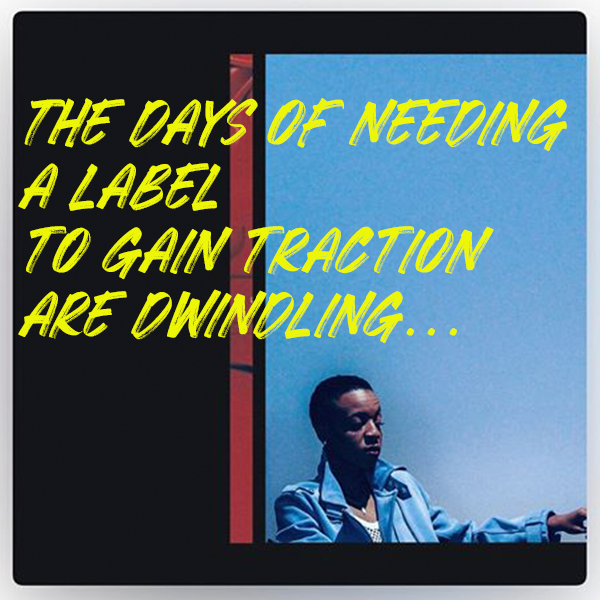 How has the music industry changed since your early days?
How has the music industry changed since your early days?
When I first decided I was confident enough to share my music, MySpace was the number one social media platform for independent artists to be seen… and even then, the only way to professionally release and sell your music was to be distributed through a record label. These days, you can top the charts with a song you’ve made in your bedroom/home studio! The days of needing a label to gain traction are dwindling. In fact, the perception of releasing independently without industry backing but gaining a lot of traction and virality is possibly an even more attractive narrative, nowadays. When I started making music, being signed and moving to a million-dollar studio was at the top of my list of goals. Now, I can make music anywhere. I make beats on the plane and outside in the park. My new focus is the groundwork: studying, practicing, becoming the best at what you do and building your own core following. Without these, a label will rarely sniff in your direction.
Describe the first time you wrote a song? Produced it?
I wrote my first song at eight years old with my younger brother using a karaoke machine. I can’t remember how that went but we used to practice and perform it for our parents, haha! I was a quiet kid, and I discovered writing lyrics was a good guise to get my thoughts out. My dad played so much old-skool R&B and Neo soul where everyone sang about being in love, and I guess a part of me wanted to feel like that too so I started writing about love but at 11, what did I know about it? The earliest song I can remember producing was called “Are you okay?” and it was a song asking my imaginary love interest to tell me what’s up when things aren’t smooth between us. Clearly, I was listening to music beyond my years. It was an intense eight-bar R&B loop with The Neptunes-style drums and ridiculously loud synths. I recorded the vocals on a £10 Logitech microphone from Argos!
Who has been an influence in your life?
The most influence I’ve had in my life has been from my friendships and adverse life experiences. I’ve had the same best friends for 18 years and it shocks me how much we’ve grown with each other. We both spend so much time working out all the issues of the world and working through all of thoughts together, we’re each other’s therapists. After all this intense self-analysis and critical thought, you end up in a place of understanding. And when you know something you can confidently talk, write and convert it into art; and that’s what’s kept me writing hundreds of songs over the years.
Musically, it’s been artists like Missy Elliott, Pharrell, Timbaland, Jon B, and Musiq Soulchild. I became obsessed with electronic music listening to Dorian Concept, Hudson Mohawk and Monte Booker on Soundcloud and because I couldn’t play an instrument, I learned how to manipulate samples like they do in order to get the desired effect.
Have you ever wanted to give up on music? What keeps you going? 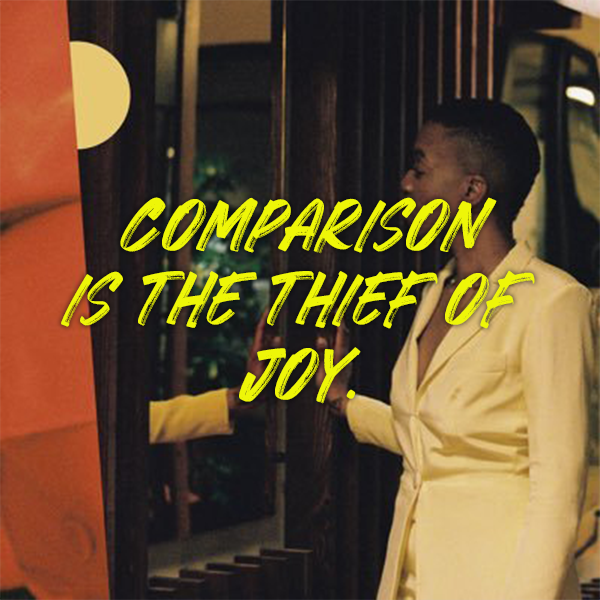
I’ve wanted to give up on music many times! At times, it’s difficult to stay motivated when you’re working away, making and sharing music and your bills are piling up. It’s difficult not to compare yourself to others because you need examples of success in order to set goals for yourself, but the comparison is the thief of joy. In my career, I’ve had a lot of people make me huge promises and then let me down but later on, I learned that the direction and trajectory of my life and career is no one else’s responsibility but mine. Confidence and self-belief is what keeps me going. When you have confidence, it allows you to act and send out messages of intent to others which causes them to believe and invest in you. The confidence comes from practicing and knowing that now I can make a song without difficulty.
What do you like about PreSonus? What caught your eye?
It just works for my brain. I need to be able to work fast when inspiration hits. I have used every DAW, and so many things about the layout of other programs just didn’t lend itself well to my brain. All of the functions are so easily accessible and placed where it just makes sense. It feels like I can do everything I need to ever do by just right clicking.
When did you first hear about Studio One?
Approximately three years ago, I was introduced to Studio one by a studio engineer who was mixing and mastering a single of mine. I watched him using it and he was adamant I should try it and then a few months after that, whilst I was running a music production demonstration, two producers approached me at the end and told me that they thought I would love it. This piqued my interest.
Any tips or tricks or interesting stories based on your experience with Studio One?
One of my tricks is I automate the tempo to do a slight increase or decrease when my beat is about to do a flip. It’s so subtle and might only change by as little as 3bpm but it makes such a difference to the feel. I might make the climb/descent happen in a space of three seconds, so it’s quick… but it’s felt.
An obvious piece of advice but somebody needs to hear this because so many of us experience the devastation of losing all of our music at least once in our careers. DOUBLE BACK UP ALL OF YOUR PROJECT FILES! Make sure not just your .MP3s and .WAVs exist in three places but your entire project file. On your computer, on an external hard drive and online e.g DropBox, Google Drive.
 How easy/difficult was Studio One to learn?
How easy/difficult was Studio One to learn?
In my experience, Studio One is the easiest DAW to learn. It’s been the easiest to teach on, too.
Where do you go for support?
YouTube tutorials, mostly. And luckily, I have access to producers who’s work I admire that also use Studio One so I go to them for tips.
Where do you go for inspiration?
I go outside. Eventually, the intense pull to create will draw me back inside. I listen to and study old music – Cuban Jazz and 90s R&B are my go-tos right now.
Recent projects? What’s next for you?
I just recently released my debut album, Honeymoon. 13 songs all written, produced and recorded by me in my home studio. It’s had national and international radio play, including being played on the countries top radio station, BBC Radio 1. Next, I will be working with Native Instruments and Nike to present “School of Bop,” a workshop for young artists to learn more about music production and writing and during these demonstrations, I always use Studio One.
Join the Studio One family at a very special promo price today!
PULL N WAY and the 24 hour Studio One Challenge!
Take a second and consider all the things you accomplish in 24 hours…
We’ll wait.
Now. Think about re-writing, producing, mixing, and mastering a song in that amount of time and putting it out for the public. Sound reasonable? Oh, and be sure to book a photographer to shoot the cover art for the single.
Did we just give you an anxiety attack? Sorry.
That’s the exact challenge that was presented to PULL N WAY, a female pop duo from Central Switzerland. Fortunately, Studio One was there to help tackle the assignment.
LATTESSO is a “cold coffee to go” brand in Switzerland. They connected with PULL N WAY for the launch of their latest vegan products. LATTESSO based the 24-hour challenge on the idea to have PULL N WAY re-write one of their existing songs—which would include tracking new vocals and creating new cover art, including photography. Watch the whole challenge here:
We had the opportunity to chat with PULL N WAY and their producer, Andy Prinz about the challenge.
During the challenge, did you want to give up? What kept you going?
Well to be honest, the hours between 3 a.m. and 6 a.m. were the hardest. We just came back to the studio after our photoshoot in Zurich. We almost fell asleep but our passion kept us motivated to continue the challenge! We managed it to finish the song and we sang tons of other songs to stay awake.
 What do you like about PreSonus? What caught your eye?
What do you like about PreSonus? What caught your eye?
All the gear is fantastic and affordable. We use Studio One to track all our vocal recordings, edit/comp the vocal tracks, and create basic ideas in pre-production. For monitoring, we have two Sceptre S8s and a Tremblor, and for the recording a Studio 192 USB interface with two priceless headphone outputs and latency-free monitoring. Studio One is a fantastic piece of software, for both composing and producing—and it’s super fast with all the drag & drop functionality. Plus, we love the graphical interface!
When did you first hear about Studio One?
Andy, one of our producers, is a long-time Studio One user… I think from version 1.6 on! So all our first recordings from four years ago had been done in Studio One, and with further PreSonus gear already, so it’s basically the DAW we’re introduced to from the very beginning.
What features are you most impressed with your gear?
The drag & drop functionality, vocal comping, Melodyne & VocALign integration via ARA, new gain functions and the GUI. We totally fell in love with the ATOM controller, which we’re starting to use as a live tool to trigger samples or vocal/drum loops from our existing songs.
How easy/difficult was Studio One to learn during the 24-hour challenge?
It was super easy to record and edit all vocals in this short time, and we made it all on our own. For the final product, we had help from Andy.
Where did you go for support?
We had a basic introduction by our producer, and just learned by doing in Studio One Artist—and we used some YouTube tutorials as well.
Where did you go for inspiration?
We worked with a really cool film crew, they are as old as we are so we had a great time together which made it easy to think about the new lyrics which represent those happy and positive vibes. So we didn‘t really need to go to a certain place to get inspired.
Any other thoughts on Studio One or PreSonus gear?
The gear is affordable and offers a huge variety of functions for semi pro’s and professionals alike! We also like that we don’t have to carry a dongle for Studio One! PreSonus is part of our musical journey for a long time and we’ll continue using it for all current and future recordings. At the moment we’re writing and producing new songs for various collaborations and new Pull N Way songs.. so stay tuned. Equipment: We just found out on Instagram that PreSonus has released some microphones! We’ll definitely try these out!
Recent projects? What’s next for you?
We have released our debut album “Colours” this year but–after several live gigs during Summer–we’ve already started working on new material for our upcoming releases, ranging from Pop to Electronic. We’ll also try to make at least 1-2 cloud trap songs… therefore we’re actually looking for a suitable French rapper. Besides that, we have loads of featuring requests, mainly from the EDM scene/DJs and we’re currently evaluating what’s best for us and what’s the best fit!
Follow PULL N WAY on Instagram here!
Heartcast Media in Washington, DC and the StudioLive 16
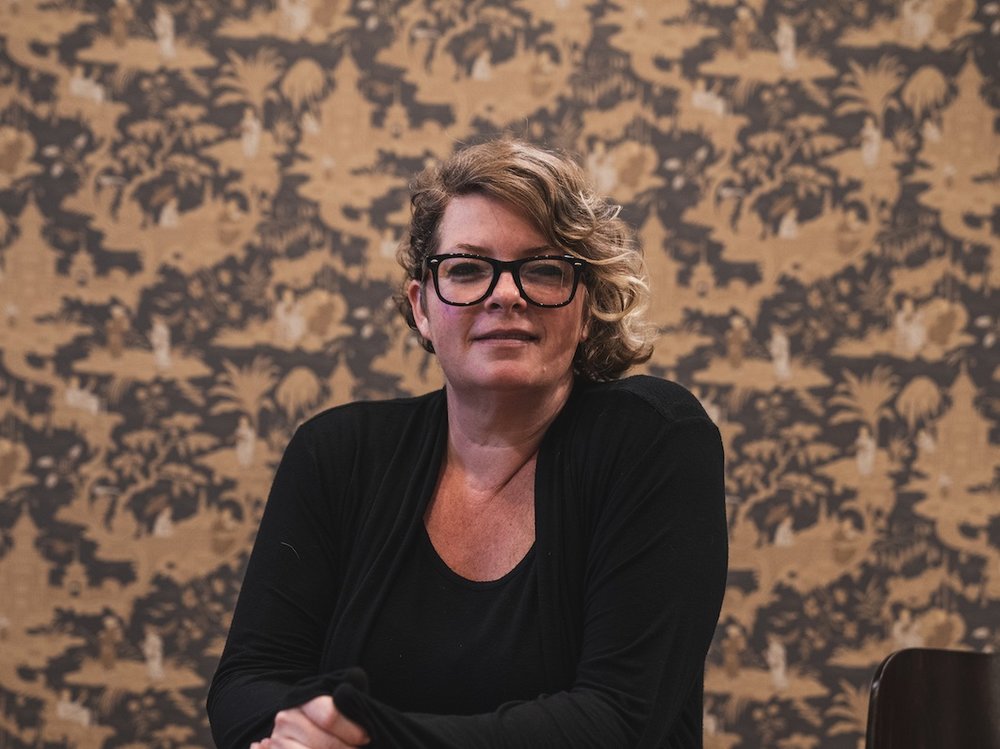 Heartcast Media is a dedicated full-service studio in Washington, D.C. that works with clients to create high quality, authentic podcast content that inspires, educates and connects. Molly Ruland and her team specialize in working with entrepreneurs, visionaries, and businesses of all sizes who have an impactful point-of-view.
Heartcast Media is a dedicated full-service studio in Washington, D.C. that works with clients to create high quality, authentic podcast content that inspires, educates and connects. Molly Ruland and her team specialize in working with entrepreneurs, visionaries, and businesses of all sizes who have an impactful point-of-view.
Woman-owned Heartcast Media is the vision of Molly Ruland who is dedicated to helping individuals and organizations bring their authentic, original content to life through podcasts. A sister-company to One Love Massive, Heartcast Media clients range from go-go bands to conservative political commentators.
They’re also PreSonus users—and have recorded 85 bands and 150 podcasts in the past 11 months alone!
We think Molly’s business idea is genius, and of course we’re glad that they’ve chosen the StudioLive 16 for their time-sensitive workflow. From the Heartcast website:
We have fully embraced technology and have figured out how to eliminate post production with real time video editing and audio mastering. We deliver all files within 48 hours of recording, typically within 3-4.
We’re proud to be a part of their process, so we wanted to hear more about how this whole operation works. Read all about Molly and Heartcast Media….
Tell us about your background. How long have you been in the audio industry?
I have owned and operated a multimedia company for the last 20 years. I was primarily focused on artist bookings and events. Creating an aesthetic has always been my passion.
How has the audio industry changed since your early days?
Everything is so streamlined now, and the gatekeepers have been removed. I love the idea of accessibility and practicality. Information is readily available which has opened doors for people who weren’t always welcome at the table, and I think that’s great.
How did Heartcast Media come about?
After recording 85 bands and 150 podcasts in 11 months, I realized that my passion and vision align perfectly through podcast production. I love amplifying voices, I always have. I saw a need in the market for high-quality turnkey podcast production, so I created the business to solve that problem. We do things differently—we embrace technology, and by doing so we are able to eliminate the need for a lot of post-production. This saves people time and money and our clients love that.
What’s your favorite podcast right now? Are you allowed to have a favorite?
Tom Bilyeu’s Impact Theory. No question, hands down. Game changer for me.
Tell us about your podcast. Where did the idea for your podcast come from? How does your first podcast compare to your most recent?
I have just launched The Lower Third Podcast because I know so many amazing people whom I garner so much inspiration from, and I wanted to interview and talk to them about mindset and passion. It’s a work in progress. I am looking forward to producing more episodes. However, my passion is producing other people’s podcast and helping them be successful.
There are so many podcasts these days. How do you stand out?
Having a plan for your podcast is imperative. Every podcaster should examine how and if their podcast is providing value. If there isn’t a clear answer, you don’t have a podcast yet.
What challenges do you face recording a podcast?
I am positive that most people don’t understand how much work goes into creating and producing a podcast. It’s a lot of work. It’s not cheap either, and anyone who tells you can start a podcast for $100 is delusional. If you are going to start a podcast you have to have a lot of resilience and a strong sense of self, because it will be a heavy rock to push uphill until you get momentum. It will not happen overnight.
What advice do you have for someone who wants to start a podcast?
Have a plan, understand the workload, and always be open to being wrong.
How did you first hear of PreSonus?
I learned about PreSonus through Adam Levin at Chuck Levin’s Music Center in Wheaton, Maryland. It’s legendary.
 What PreSonus products do you use?
What PreSonus products do you use?
I have the StudioLive 16 in my studio, and we love it. It’s a little more than we need for podcasts, but we also produce live music events so it’s great to have a board that can do both. It’s a solid piece of equipment with really great features that fit our needs. It’s a beautiful board, what’s not to love?
Recent projects? What’s next for you?
My goal is to produce the best podcasts coming out of the East Coast by elevating and amplifying voices in my community that will make the world a better place, one conversation at a time. Every city should have a Heartcast Media.
Stay connected with Heartcast Media on Instagram!
Learn more about the StudioLive family here!
Rich Mahan Discusses Podcasting and the Quantum
We recently had the opportunity to hear from Rich Mahan who is a guitarist, singer-songwriter, podcaster, and a PreSonus user! If you’re not familiar with Rhino, we’re excited to introduce you to it. It is important and very well-respected reissue label, the label home of Warner Music’s legendary catalog. Currently living in Nashville, Rich where he records his podcast titled the Rhino Podcast. This biweekly podcast dives into classic artist and albums, interviews with musicians and lots of behind the scenes stories about some of the most legendary music. Their latest episode discusses Prince and it’s very entertaining! Read all about his thoughts on the growing a creating a podcast, the industry, gear and the Quantum 2!
Tell us about your background. How long have you been in the audio industry?
I started recording in the mid 90’s on a Vestax 4 track cassette recorder, moved up to a Tascam 388 reel to reel, and then to computer-based recording around 2003, starting originally using Vegas. I’ve been working in Pro Tools now for about 15 years.
How has the Audio industry changed since your early days?
The gear keeps getting better and better. The quality you can capture in a home studio or out in the field is unreal, and digital editing has changed everything. You can repair audio problems now that you simply couldn’t before, problems that would necessitate re-recording a part.
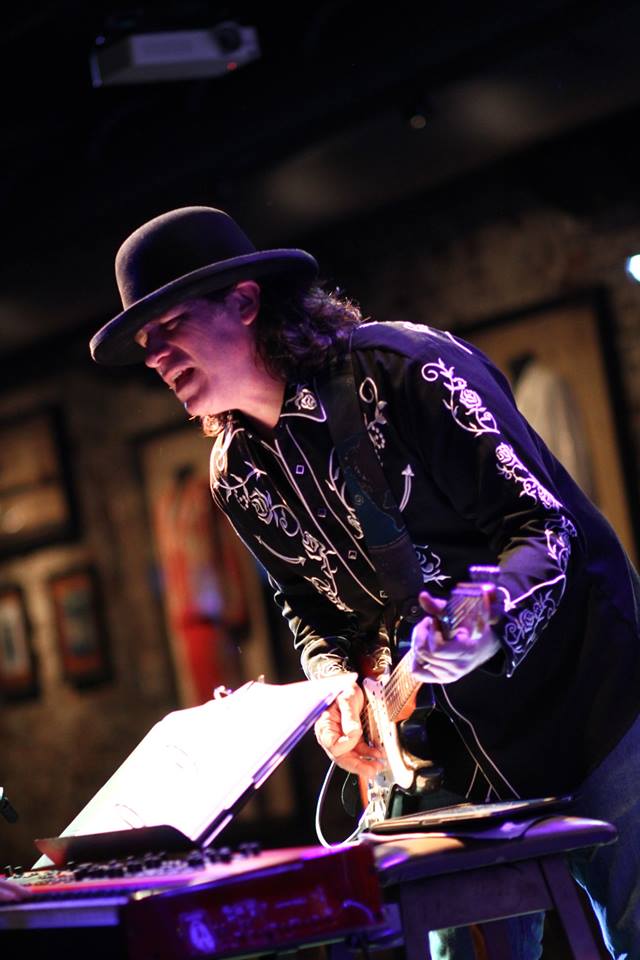 What’s your favorite podcast right now?
What’s your favorite podcast right now?
I love Cocaine & Rhinestones, by Tyler Mahan Coe (No relation). It’s about 20th-century country music, it’s really well researched and produced, and I’ve learned a ton listening to it.
Tell us about your podcast. Where did the idea for your podcast come from? How does your first podcast compare to your most recent?
The idea for the Rhino Podcast came from both Rhino and me and my co-host Dennis Scheyer. We pitched the idea to them and they said, “We’ve been wanting to do a podcast…” so it came together pretty easily. The format since the 1st episode has changed here and there, but basically, it’s still the same. Every once in awhile Rhino will want to add or take something out, so it is a living, breathing thing that progresses as it goes.
There are so many podcasts these days. How do you stand out?
There are a number of reasons why the Rhino Podcast stands out. First and foremost, we are fortunate to be working with the greatest musicians and artists of our time. Rhino Entertainment is the catalog arm of Warner Music Group, so we cover any classic recordings from Atlantic, Warner Brothers, Reprise, Elektra, Sire… there’s a wealth of musical riches to explore, and it’s been thrilling to interview the artists who have created the soundtracks of our lives. On the production side of things, we hold ourselves to a high standard of audio quality; we fight hard to avoid using telephone audio for production purposes. If we can’t interview an artist in person, then we get them into a studio or send a recordist to them to capture high-quality audio for production, and just use the phone to talk with each other, everyone wearing a microphone headset or phone earbuds so there’s no monitor bleed into the mics. I spend a lot of time removing background noise and cleaning things up, removing lip smacks, getting fades perfect, and generally being a perfectionist. I don’t let anything go. If I hear an issue, I fix it.
What advice do you have for someone who wants to start a podcast?
Really learn how to record and edit well to make a professional sounding product. Record and edit as often as you can, and practice, practice, practice. Record your friends’ bands or your own music, interview your parents or grandparents and clean up the audio by removing ums, uhs, stutters and stammers, click and pops. Learn how the room you’re recording in affects the sound of your recording. Experiment with different microphones, and buy the best gear for the job that you can afford. Garbage in, garbage out. There’s a saying that you need to get 10,000 hours of experience to really start cooking, and there’s something to that.
How did you first hear of PreSonus?
I first heard of PreSonus when I was building my first ProTools rig. I wanted better preamps than my Digi002 offered, and I scored a PreSonus Eureka channel strip on the recommendation of a friend. It was great to get a good clean preamp, compression, and EQ all in a one-rack space unit. I liked the sound of it so much that I then bought two PreSonus MP20’s for tracking drums. That improved my recordings at that time dramatically.
What PreSonus products do you use?
Currently, I’m using a Quantum 2.
Why did you decide to go with Quantum?
There are a few reasons I went with the Quantum. Firstly because it has 4 mic inputs, along with a ton of other I/O options, which I need when interviewing multiple subjects simultaneously. Another huge feature is that the Quantum has 2 Thunderbolt ports which allow me to plug in my bus-powered thunderbolt drive into the Quantum, and then the Quantum into my Macbook Pro. Thirdly, I love the smaller footprint, its’ not as wide as a piece of rack gear, so it fits easily into my messenger bag making it really easy to carry onto an airplane. And last but certainly not least, it is dead quiet, and there’s plenty of gain in the preamps to drive a Shure SM7B, which is my VO microphone of choice. The Quantum sounds awesome.
What do you like about PreSonus? What caught your eye?
The folks at PreSonus really are the best to work with. If you have an issue or need to figure something out, you can get help and get back up and running quickly. But another great thing is their gear is intuitive and easy to use. It’s easy to get great tones with their gear.
Recent projects? What’s next for you?
I just released a new album entitled, “Hot Chicken Wisdom.” I was able to put the Quantum to use while tracking parts, especially when I was traveling and wanted to have friends lay down parts away from my studio. I think if you listen to the record you’ll hear that we got some great tones, besides it’s the perfect summer soundtrack!
Next up for me is some touring to support Hot Chicken Wisdom, and I have a second Podcast in pre-production that I can’t announce quite yet, but I’m really excited about it. Anyone who wants to keep up with me can check me out at richmahan.com.
Follow Rich on Facebook Here!
Artist Denny White Discusses Career and Studio One!
We were recently introduced to Denny White via his artist bro and Studio One fan Josh Cumbee. Denny combines pop and electronic beats, soulful blues vocals, and a singer/songwriter style that takes listeners on a trip! Living in Los Angeles has awarded him opportunities to play alongside acts such as Young the Giant, Dawes, and Tove Styrke. He JUST released some vocal sample packs with our friends at Splice, and he’s currently working on a collection of singles leading up to his debut full-length album coming out soon! We recently had the opportunity to chat with him about his career and his gear.
Give us some background on yourself. How long have you been making music?
I grew up in a sleepy California suburb called Hemet and music was always at the centerpiece of everything we did. I fell slowly into making music as a career, and still find it crazy that I call this my “job.” My freshman year of college, I met my good buddy Brent Kutlze, who produced my first solo EP and mentored me early on. I saw first hand how he wrote & produced for other artists, while also being a full-time one himself in his band OneRepublic. Releasing that first EP led to me meeting a manager, doing hundreds of co-writes, moving to LA, and eventually signing a publishing deal with Warner Chappell.
How has the music industry changed since your early days?
It’s such a catch-22… everything’s changed while nothing has at the same time. I was technically streaming music in high school with Limewire and MySpace, but couldn’t have dreamed it would morph into streaming as we know it today. On the recording side, I’m still producing on a laptop like I was in college, but everything is light years better and faster than anything I could have imagined then. One of the biggest changes is the vast amounts of knowledge and resources available to everyone now. The industry once sounded like some mysterious faraway place that only a few had access to, but now that glass ceiling has been shattered. I’ve written with kids who know about publishing, licensing, producing, and even their own frequency preferences on a vocal, thanks to amazing resources like Pensado’s Place, or podcasts like Ross Golan’s And the Writer is.
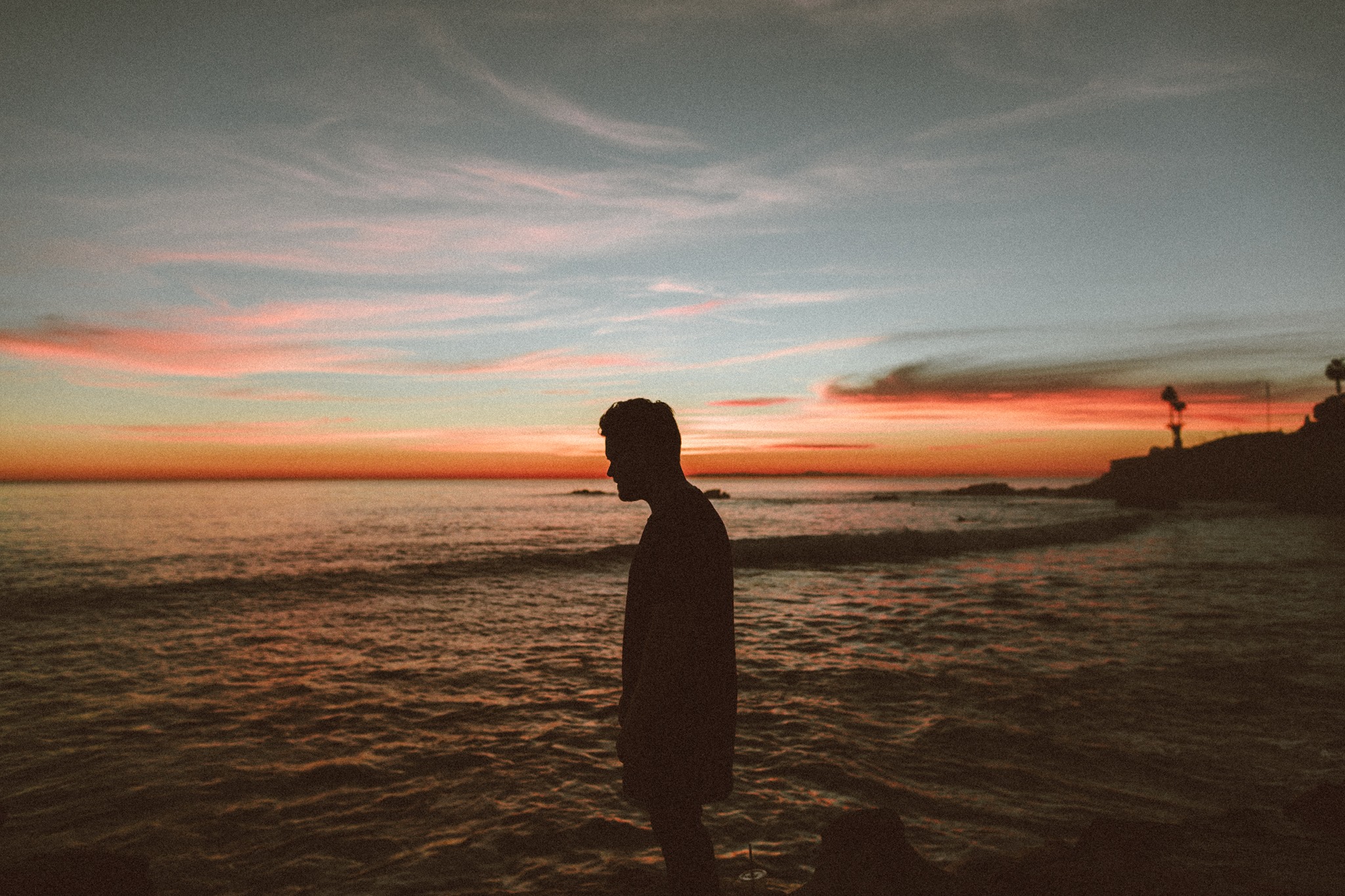 Describe the first time you wrote a song.
Describe the first time you wrote a song.
My first song was written for a school talent show, and I hope to find a dusty VHS tape someday with a little me on it, most likely singing a mid-tempo Ben Folds-esque piano tune.
Who has been an influence in your life?
Hands down my wife’s been the biggest influence in my life. Musically, I’ve been the benefactor of so many talented friends and collaborators who’ve had an influence on me as well over the years, Brent Kutlze, Michael Brun, David Hodges, Alex Delicata, Steve Wilmot, and Jeff Sojka to name a few!
Have you ever wanted to give up on music? What keeps you going?
I’ve never wanted to give up on music per se, but have definitely contemplated other career paths, as this one has the propensity to drive you mad; you really have to love it despite the wild ebb and flow of the industry and embrace the process daily. My faith and family keep me going on days I don’t want to.
How did you first hear of PreSonus?
I’ve always known about PreSonus but knew little about the products until really hearing about Studio One from my freakishly talented friend Josh Cumbee last year.
What do you like about PreSonus? What caught your eye?
I remember being in Josh’s studio and was immediately intrigued when I saw the Start Page of Studio One. It felt so unique and custom to Josh. The first feature that caught my eye was the window in the middle where you can upload your own art, that prints on every mixdown. Also, the organization of seeing all recent files on the left, without having to scroll through a list or search your hard drive immediately spoke to my OCD-ness.
What PreSonus products do you use?
I use Studio One, Monitor Station v2, and just snagged the newest FaderPort for even more control!
What features are you most impressed with in Studio One?
I really dig Console Shaper, and the immediate vibe it can give to any blank start. The hybrid dual buffer engine is insane and makes it possible to work in large projects that historically would have been a cluster cuss, and allows me to use instances of soft synths that are taxing on CPU like Kontact or Vengeance Avenger up until the finish line. Tracklist organization, Fat Channel, and “Candleblower” bass in Mai Tai are a few of the other million things I love in it.
Any user tips or tricks or interesting stories based on your experience with Studio One?
Recently I released a Vocal pack on Splice, and Sample One XT made all my vocal chops feel so much more creative and important-sounding than anything I could have accomplished in my sad old DAW’s sampler. First I’d record pass of adlibs, tune with the integrated Melodyne (insanely fast,) then map individual samples across 3-5 keys and quickly explore new melody ideas. Another huge lifehack is I have “W” set to “Locate Mouse Cursor.” It’s insane how much time these things have saved me, and now I’m able to be creative almost immediately.
How easy/difficult was Studio One to learn?
The transition was so easy. I was very reluctant at first, thinking It’d take way too much time, but after doing a few sessions in it I was back at full speed with a whole new perspective on producing.
Where do you go for support?
From the Knowledgebase to millions of videos on YouTube, or texting one of my friends about Studio One, there’s never a shortage of support.
Recent projects? What’s next for you?
Last week I released my first Vocal Sample Pack on Splice that I’m really proud of. Currently, I’m in the middle of writing for my album, while also producing a record for Gabriel Conte!
Keep up with Denny on Instagram!
Check out his work on Spotify!
Buy his Vocal Sample Pack from Splice Here!
Justin Lassen on the Making of Black Fox Society: Abstract
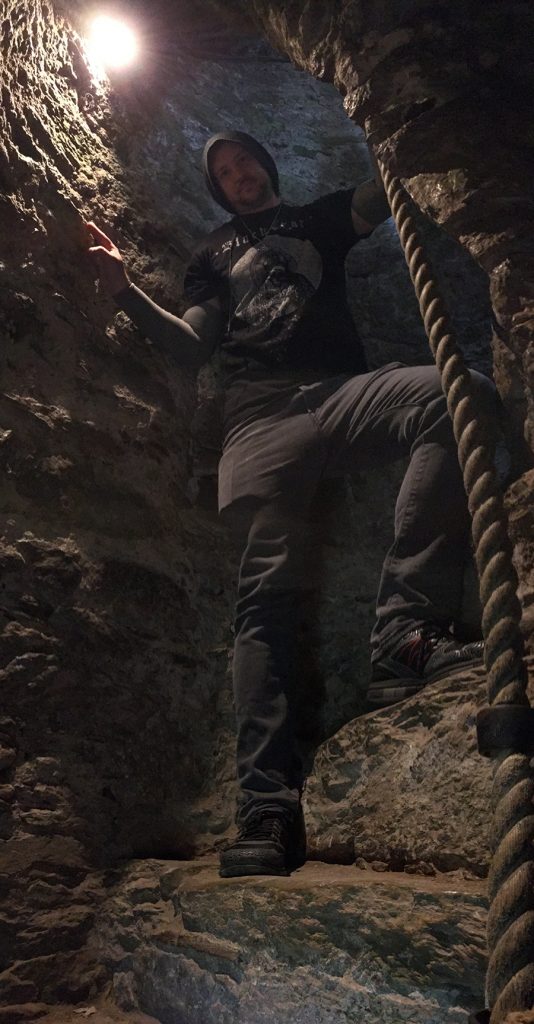
Justin Lassen is a composer, producer, sound designer, and good friend to PreSonus. Justin has had his hands in a LOT of music, TV, and video game projects over the years, but is perhaps best known for his best-selling sound library “White Rabbit Asylum.” Always one to outdo himself, Justin has followed it up with a spiritual successor called “Black Fox Society: Abstract,” available now at shop.presonus.com.
Let’s be clear from the get-go… this is not just another sound library. Justin spent ten years traveling to obscure corners of the earth to record strange and unheard sounds for this project, and then spent another year just editing them all together for this massive 3.7 gigabyte collection of loops, instrumentals, and industrial beats—all inspired by mysterious secret societies. He was kind enough to take the time to share some stories (and AMAZING photos!) of how this all came to be. Strap in, this one’s quite a ride.
Talk to us a little bit about some of the mysterious locations you went to—22+ countries is a LOT!
Secret societies have fascinated me for years. When I lived in Europe in my twenties, I became aware of so much history the world never hears about. Everything in these ancient cities is literally built on top of the previous generations. This means there are a lot of hidden spaces and forgotten stories to uncover. I knew that every country in the world has stories to tell, but I focused especially on the places that have shaped the world as we know it today.
I was drawn to places where I knew groups of influencers have gathered throughout time. So, I would start with plans to visit places that I knew would not only be visually intriguing but would also provide unique sound environments that could be crafted into high-quality ambient concepts. The most surprising part was what I would find along the way. As I talked to locals and explored some less-traveled roads, I found spaces that had a unique vibe, and I would stop and capture the environment before moving on.
Staying flexible in both my expectations of what I would actually capture, as well as where it would happen, allowed for some unexpected opportunities to capture some once-in-a-lifetime material.
For example, when I was in Korea, I received a tip from a local contact about a secret shamanic temple up in the mountains outside of the city. With very few people around, I was able to capture much of the mystical ambiance that was available among those sacred stones. Distant chanting and ceremonial bells enriched the environment more than I could have hoped.
In Europe, where so much history has been buried through the years, I made a point of going off the beaten path. This led me into ancient grottos, up decaying staircases, through ruins and forgotten graveyards full of nameless stones. You can’t be in these places without feeling something.
You might think that this is the magic behind Black Fox Society, but it’s these feelings that inspired me to take the recordings I collected around the world and shape them into individual works of art that evoke specific emotions, reminders of what I felt in these places.
What sort of field recording gear did you use?
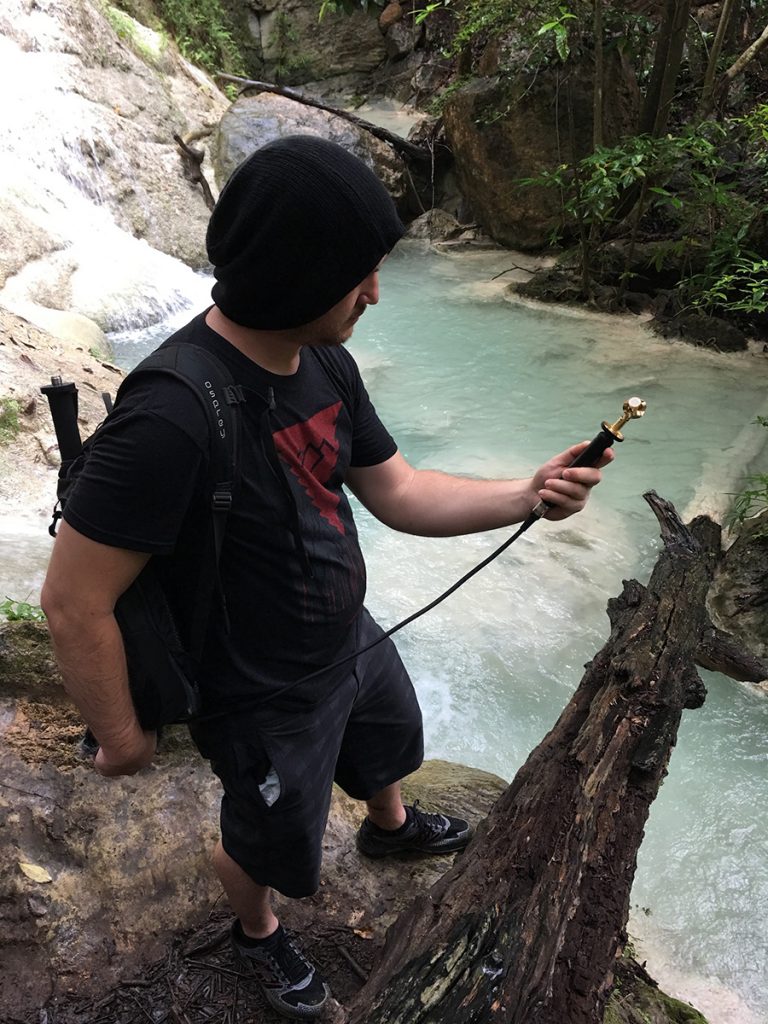
My primary field recording equipment was Zoom F4, Sennheiser Ambeo-VR Mic, and a Roland R-07 Recorder w/ Roland binaural headset/mic combo. I also brought a Netbook on my trip, several hard drives, and a ton of SD cards for the various recorders and camera equipment. I also used the Sennheiser Ambeo Smart Headset for some cool unique recording situations.
Any fave mics, recorders, etc? Binaural mics?
With all of that gear, and using all of it in each country and location, what ended up being my favorite piece of gear was the Ambeo Smart HeadSet, particularly when going into places that I wasn’t able to bring all of the mics, XLR cables, recorders. It ended up capturing some really beautiful audio that felt “3D” and even made me feel like I was “there” on playback. Upon returning from my trip, I actually got a ton of new equipment and microphones that I plan on bringing with me on my next set of adventures.
How do you keep such a huge collection of .WAV files organized when you’re busy traveling? One SD Card per location? Strict file naming conventions?
Keeping the files organized is easier than you might expect. I was walking an average of 10 miles per day in most cities. I was usually pretty tired by the end of the day! It was a non-negotiable routine when I would get back to my computer to download the work from that day. I would organize it by city and by date. I kept a concise log of my itinerary, including notes of where I went and what I did that day. I organized the video, pictures, and drone footage the same way and that helped keep everything straight.
The most important thing to know about the file management is that at the end of the day, the project didn’t demand location-specific end products. Creating the library was a much more artistic venture than just a single track pulled from a cathedral in Prague, for example. Each ambient loop in the library has 8 to 17 layers in them, each layer coming from different parts of the trip and world. The color of each audio sample was more important than the locale in deciding how it would be used in the final content.
The file names were simple, based on date and city. My criteria for what was worth including was determined beforehand, so I didn’t need to filter my content much when I got back. I ended up using almost every single thing I recorded!
Did you have any issues getting all of that recording gear and media from country-to-country (through international customs) in your travels?
Yes, actually. I was at airports almost every other day, and no airport ever took it easy on me. I had to take everything out of its case, out of the bag each time, to show them that it wasn’t some elaborate mechanism. I even had to throw away batteries and things in some countries. I think the next time I do a trip like this I want to simplify the gear even more. What a lesson to learn. What is very good news is that recording equipment is getting smaller and smaller, even for ultra-high-definition audio. Taking the drone out of its case was also not fun at all. The 4K camera and gimbal system also looked strange on scanners, so that had to come out of the bag as well. I almost missed a few flights because of some of the security screenings taking longer than they should have. I’ll pack lighter next time… and I thought I was pretty light to begin with!
What were some challenging moments in the field and why?

Some of the most challenging moments for me was the physicality of this kind of immense travel. Walking 10 miles a day on foot, meant I needed shoes that would keep me alive and moving forward. A lot of people saw my Instagram during the travels and thought it looked like a fun trip and gorgeous photos and stories. Parts of it were fun, but most of it was insanely long hours and hard work. Not just the recording aspect, but moving from place to place, getting equipment out at the drop of a hat if we happened to venture upon something unplanned but totally interesting and worth capturing. A lot of this trip was filled with those surprise moments.
Other challenges included making sure we didn’t get lazy with organizing the content. At the end of each night, no matter how tired, I had to make sure to file things away, organize things on the hard drives (multiple hard drives for backup) from all the SD cards and recording equipment.
I got sick during parts of the trip, but still had to keep moving forward. I had a goal and a dream, and a lot of tickets booked. I couldn’t miss flights or trains or cars, even if I was sick, I had to venture forward and keep on schedule and on track. In a lot of ways, it’s like a band on tour. Band tours are hard and grueling work. You’re expected to perform in each city, and there is no “fun time,” as each day in between is only used to travel to the next set of destinations. I didn’t get to stop and rest very often at all if ever. Carrying an entire studio on my back, gear and everything as we walked was also hard work. My feet were sore, but I knew I had to get through all of these countries and try to find the best audio I could find. I made sure to do a lot of research in between travel to pick interesting places that fit the sounds and environments I was going after.
Did you discover any amazing new foods/dishes that were firsts?
We always ate the best food in each country in general, but one of my absolute favorite places to eat was Thailand! That country has some awesome food. In particular, I had the honor of feasting on the award-winning menu of Chef Bee Satongun (who was awarded Best Female Chef in Asia, 2018.) So pretty amazing and humbling to be eating dishes from one of the best of the best in all of Asia! Her food has so many flavors and textures that create little worlds of their own! She was an artist. She even let me bring recording equipment into her kitchen to capture foley design, sound design and ambiance while she was cooking and creating her masterpieces. We recorded all kinds of ambisonic stuff even with food! ?
How did the people and the countries’ overall vibe and energy affect your project sonically?

People always affect my creative process wherever I am in the world. Sonically, each group of humans spoke different languages, so that created a new ambiance wherever we went. Humans have different tonal qualities depending on the language they speak. If you add large groups of them together, you get very different textures in general. For crowds, trains, or cityscapes, it is the people, the human beings, with voices that bring those places to life. Night markets in Korea vs. day markets in Thailand or heavily touristed areas in Europe all had their own tones and chatter. Even different train tunnels and docks of people sounded different from place to place.
Each country also had its own general vibe and energy. Of all the places I went, I think I really loved Ireland the most. The people there were so warm, friendly and caring. Not to say that there aren’t warm and friendly people in other places, but for me, I felt right at home in Ireland. Driving through the countryside (on the wrong side of the road, haha) was beautiful to experience. It’s these kinds of vibes and energies that differ in all these places. The jungles in Thailand or even getting to play with an elephant in a river was one of my most memorable experiences. Yes, we recorded audio from my playtime with the elephant, but being near this beautiful creature had a pure energy around it that I will remember until the day I die. I got to do so many things and meet so many people that it will be years of stories that I can recall for years to come!
OK, let’s not forget that getting there is only HALF the fun. You spent a year editing this stuff together, so here’s some post-production questions:
Any particular tricks or processing that came in particularly handy?
I love the “markers” in Studio One, especially when “exporting”, it makes cataloging and batch exporting so much easier for one-shots and custom sound design layers. I didn’t want to just make a generic “found sound” kind of library, so I did a lot of editing, manipulation and huge chains of plugins to process and change the audio for some of the layers. I wanted to maintain the realism of the raw samples and augment them with stories and sonic ideas. However, I still wanted to maintain the vibe of the places I visited. I collected my own impulse responses (IR) when I could in certain places, and then used those to further edit location audio in other places, to create an amalgamation of different textures and moods. Like taking the reverb IR from a cathedral in one country and using it to process the outdoor space of a jungle or a cave and so on. There were no “rules.” I didn’t want to give myself any barriers. I wasn’t making a “documentary” about world travel. I was telling a story about secret places and societies. I was using the sounds I found all over the world simply as colors, that I could dip into and paint new landscapes and seemingly otherworldly places to explore. My body explored these places on the trip, but my mind further explored these places back home in the studio on a deeper level.
I love being able to collect the spirit of a place or situation and go for hyper-realism in some situations and majestic imagination in others. That is my favorite thing about sound design and audio editing. Every sample, every foley design, every hit, every texture, every ambient space can be broken apart and put back together in a million different ways like lego bricks. Although I have a pretty generously-sized library that I released, the trip still has over five terabytes of raw audio collected as a well of inspiration for future dreams and future projects to come. It was an amazing journey. I felt like Indiana Jones in some places.
You mention that Black Fox Society is ideal for use in VR and games. What are some of the considerations made in the tracking phase as opposed to recording sounds for traditional stereo use? 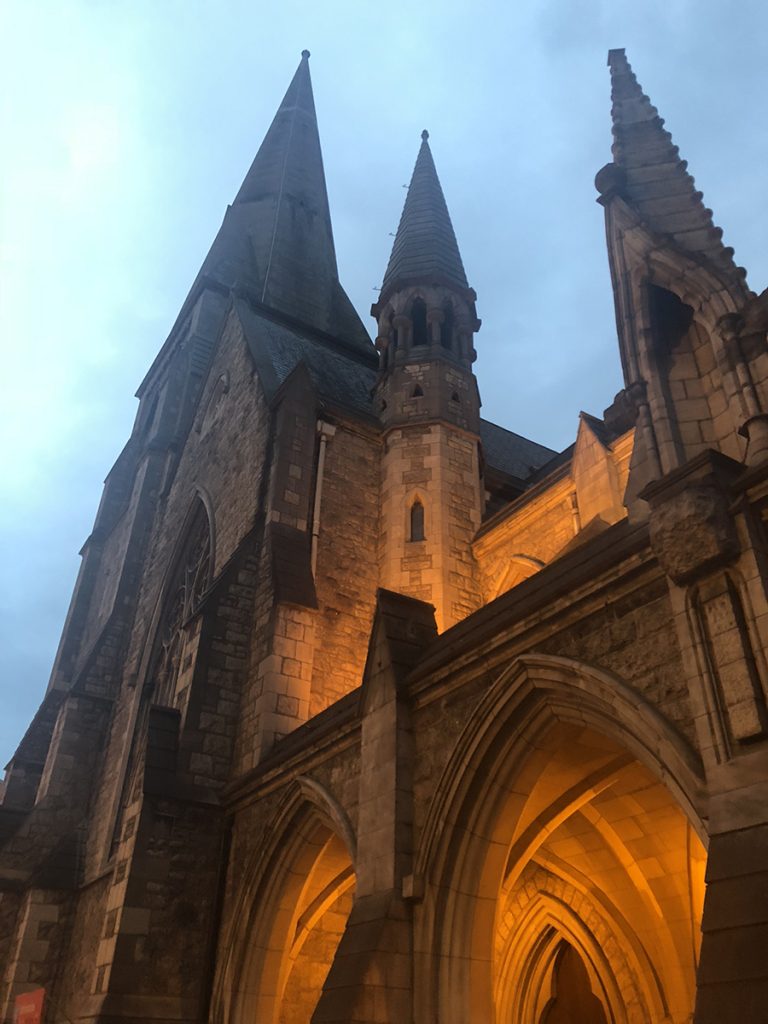
I work in Unreal and Unity engines a lot on the games that I get to work on, so I’ve had years of experience in implementing audio assets into interactive programs, attractions, rides, video games and virtual reality experiences, including the 2018 Emmy-nominated Spider-Man VR Experience which I was Audio Director for. I have been getting more heavily involved with surround audio in the last half decade, more-so than any time in my career—although I started doing surround remixing and composing with DTS back in 2004! For Black Fox Society to be useful for me as a sound designer for these kinds of experiences, I wanted to make sure that the audio felt “spatial” and like I’m “there.”The more spatial, the more useful for me and other sound designers in these fields.
I made sure to collect a lot of 3D audio/binaural audio, particularly because it can translate well for video games, VR, trailers, and movies alike. Ambisonic audio is great because you can collapse it down to a binaural field with very straightforward plugins. I relied heavily on environmental captures, impulse responses, and natural spatial audio in the places I traveled. I made sure to sit still and collect several minutes of each place I visited and cut out the most useful parts and augment with other audio captures to create little audio paintings. I didn’t want a “generic” library with no soul, so I made sure to mix and match different environments together to create the illusion of new places and new worlds (and new stories, as you can tell from the titles that evoke interesting emotions!) That was my favorite part of all of this sound design. I wanted to make a plethora of useful ambient audio that could be used in a number of different scenarios and still feel fresh to each new sound designer working on their own projects.
How did this library differ for you in terms of the workflow process, compared to say… White Rabbit Asylum?
White Rabbit Asylum was a more drawn-out casual creation process. It was collected over a decade from any kind of recorder I had on me at the time. From really bad microphones to really good ones and everything in between (cell phones, tape recorders, (yes, tape!) cameras, early generation portable recorders, etc.) White Rabbit Asylum did not have binaural audio or surround audio. It was merely a collection of interesting audio from my travels and adventures around the world at that time in my life. It was like a photograph or snapshot of where I was in that time of my life. White Rabbit Asylum was never meant to be a “library,” it sort of just happened naturally and organically over time from an enormous amount of collected and recorded audio. I was approached by Sony to release it as a “library,” so I edited and composed some interesting loops and story ideas with all that audio and created a haunted, surreal, otherworldly vibe with that collection. I wanted to make a library that I would want to use as well. I’m very proud of it to this day as a piece of my history.

Black Fox Society is a more deliberate approach. I traveled the world knowing I would eventually create a new library from the content I collected and recorded. It’s a spiritual successor for sure. Almost five years ago my friend Jim and I met in Louisiana and found that he was a fan and user of my previous library. He and many others have asked me over the years “When are you going to create another library?” I never quite had an answer for that because I was always busy working on so many different kinds of projects. I was doing a lot of pioneering surround work, 3D audio, binaural and ambisonic audio for Virtual Reality immersive experiential attractions and projects in these new industries. I was going out and collecting new audio for each new project, one at a time. Designing stuff from the ground up from scratch. Very tedious.
There aren’t a lot of libraries on the market with ready-to-go loopable immersive audio, so I wanted to put in a lot of hard work and heart and soul into this library so that not only would I want to use it but it might inspire others to use it for their own dreams and visions too. I wanted to create a library that could help not only me, but other VR producers and sound designers, attraction designers, film and video game editors fall into these beautiful sonic worlds. I hope that this inspires a bunch of new experiences and immersive stories for years to come. I especially love how all the layers work together in different ways for different moods and feelings.
More from Justin:
- Buy Black Fox Society: Abstract
- Sampling Surround Sound and Binaural Audio for Use in Virtual Environments and Games (via Intel)
- SoundCloud
